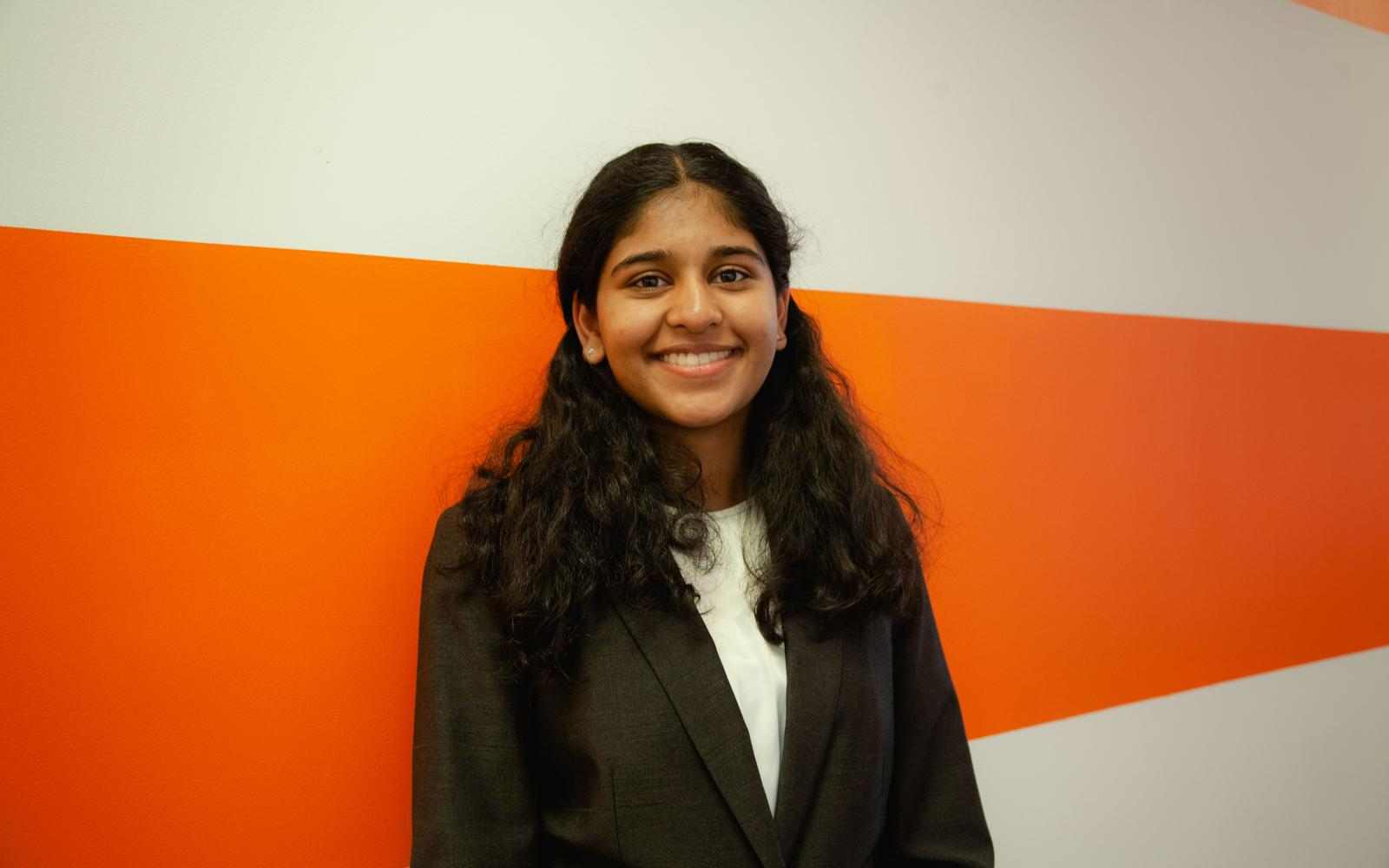Affordable Innovations: Laya's Journey to Changemaking

At the age of 12, Laya and her friend began to build lifesaving technology to address dangerous flooding across her home state of Texas. Together, they co-designed a solution called HydroAlert, an affordable device that can detect and warn local officials and residents about flooding through text alerts.
However, Laya’s success with HydroAlert did not happen overnight.
Laya grew up in Detroit, Michigan where her dad was an engineer. Frequently at her elementary school were STEM workshops conducted by automotive industry employees where she remembers they built balloon-powered cars and circuits. Her dad would also take her to visit car shows and other exhibitions at work, sparking her interest and curiosity for engineering.
A few years later, her family relocated to Austin. In fifth grade, she became very involved with Girl Scouts and Lego League, which introduces young students to scientific and real-world challenges. Her team programmed a robot and earned their spot at the world championships, which was admirable for an elementary school team.
With a boost of confidence in their acumen for STEM, her team took on a greater challenge, designing an application to help visually impared children. They constructed Haptic Vision, an e-learning app to assist visually impared students in the classroom. The team tested the app with students at a local school to get feedback on the design and reiterate based on user experience.
At a young age, Laya became comfortable with failure as she felt it is a vital part of the design process. She claims initial failures lead the way to bigger breakthroughs, narrowing down what her team needed to do to complete the project. “I think in society, failure is somewhat of a taboo topic almost. People always look to success...I think it is important to understand failure is a process to success.” This understanding is how Laya says she “lost [her] fear for failure a little bit, because [she] started to enjoy the experience of creating rather than just the end result.”
Laya’s early exposure to changemaking prepared her for her next big idea. One day in middle school, Laya and her mother were on their daily commute and found themselves nearly stuck because of severe flooding on nearby streets. This problem emerged several times that year, and eventually caused a friend’s mom to be stuck overnight in her car between two flooded roads. After a community member was swept away in a flood inside of his truck, Laya was determined to apply her growing enthusiasm for STEM to urban innovation.
Looking back at her first Lego League challenge, Laya remembers the theme being about solutions for natural disasters. She drew on this previous knowledge and conducted further research to find that current flood-detecting technology costs over $30,000 to monitor an area—a situation that has led to 99% of Texas’s 1,700 low water crossings (roadways near the regular water level) unmonitored. This situation has also forced police officers and firefighters to risk their lives in order to monitor these crossings during severe floods.
Eager to take action, Laya partnered with a friend who was on one of her earlier Lego League Teams and was a fellow Boy Scout. Their shared value for service as members of their local scout troops sparked the pair to come together and devise an affordable, accessible technology for their city.
After multiple iterations they built HydroAlert, a device that measures water levels, transfers the data, and alerts local officials. They also configured an app to alert local residents about dangerous roads triggered by flooding. Altogether, the device costs $50, offering an affordable alternative for her city to adopt.
Unfortunately, Laya struggled to schedule a meeting with local government officials. However, she realized that she needed to reach out to someone who wasn’t necessarily a city planner or an engineer, but to an official who directly works with young people and would take her seriously: the Education Outreach Coordinator. The Coordinator was able to get the pair an audience with local officials for their first presentation.
They obtained approval through the Austin Watershed Department to begin funding and began installing the technology across the city (check out local news coverage here for more). As a changemaker, Laya is determined to continue innovating; “I think that we can add in more sensors to solve for other issues, like air pollution monitoring, air quality control, even detecting wildfires or detecting earthquakes.”
Laya is also activating others to start their own changemaking journeys by hosting a Girls Who Code chapter at her school to educate female classmates on the power of technology and engineering as tools for local innovation. “I think the most important thing is to cultivate the mindset from an early age,” Laya says, “the first thing you have to do doesn’t need to be starting a nonprofit. It starts from identifying issues in your community or even in the household.”
Although young changemaking initially seems daunting for many parents, Laya advises adults to ask their children “how can we fix this?” when a young person recognizes a problem. She follows this advice with, “cultivate empathy within them, share with them the news, things that are going on around the world that expose them to different ideas and mindsets, cultures, and people.”
By exposing others to both the tools and confidence to create change, Laya inspires other young engineers, innovators, and females to be changemakers.